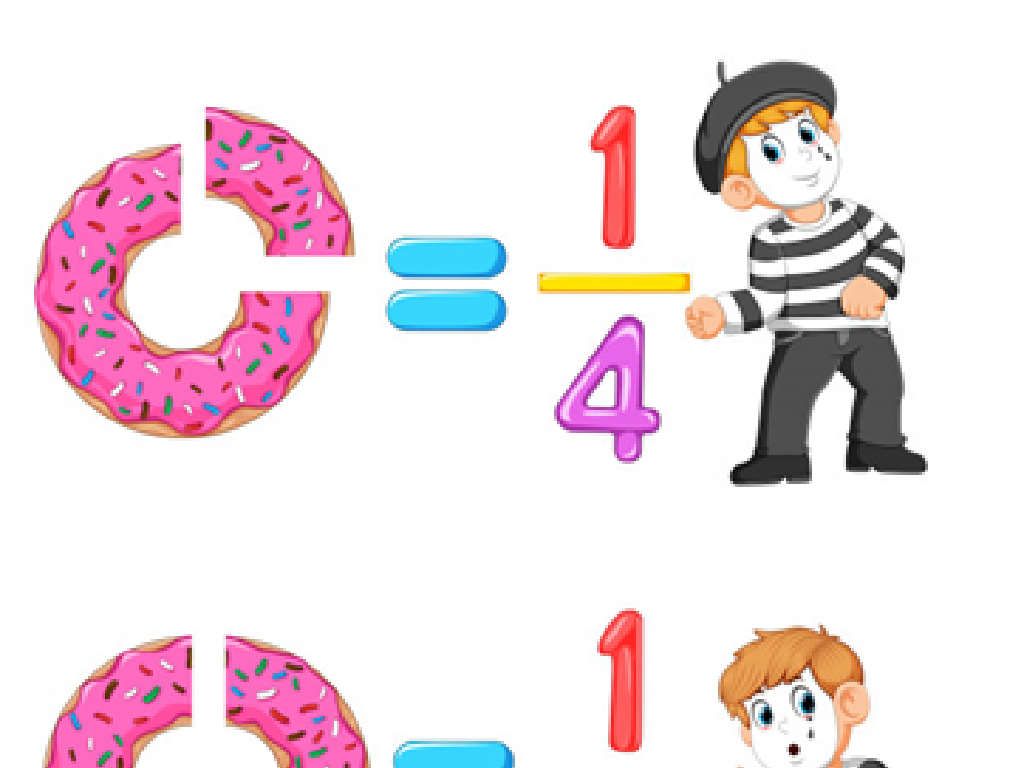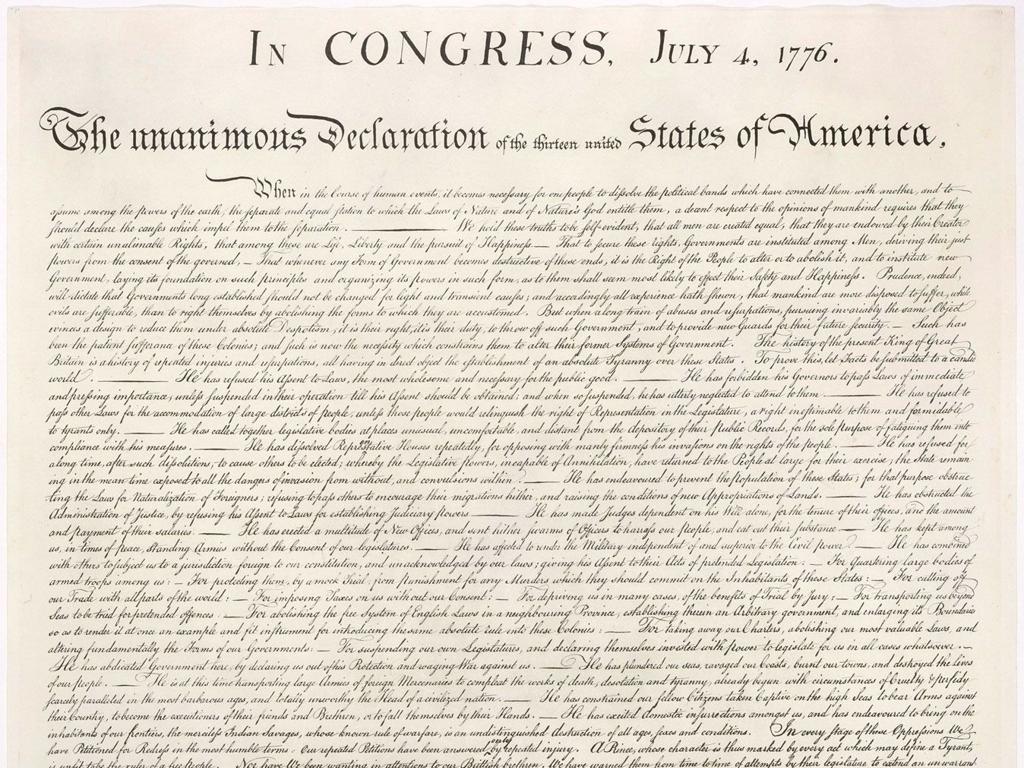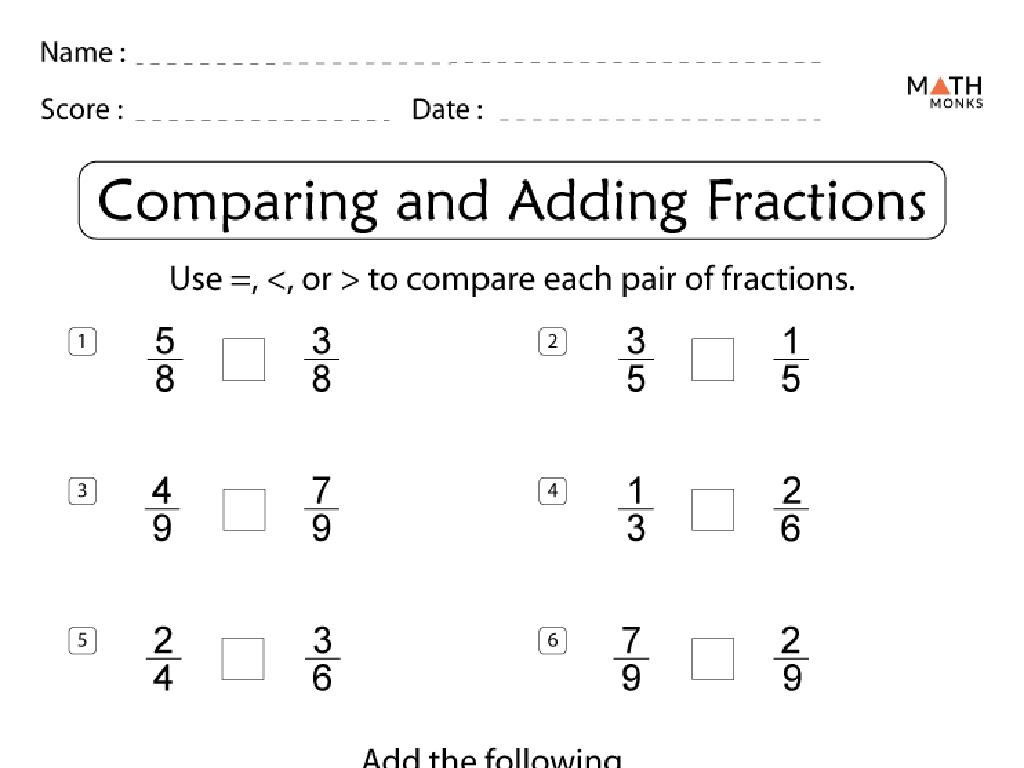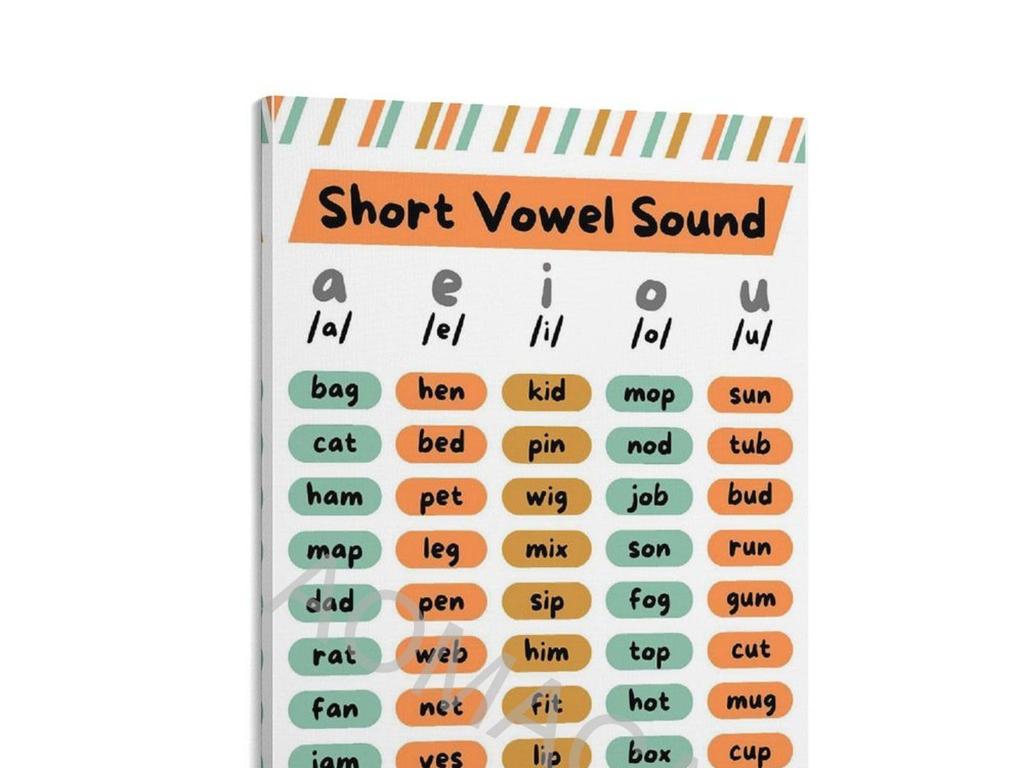Factors Of Linear Expressions
Subject: Math
Grade: Seventh grade
Topic: Equivalent Expressions
Please LOG IN to download the presentation. Access is available to registered users only.
View More Content
Factors of Linear Expressions
– Building blocks of algebra
– Focus on linear expressions
– Identifying factors
– Factors are expressions multiplied to get another expression
– Factoring expressions
– E.g., for 4x + 8, factors are 4 and x + 2
|
This slide introduces the concept of factoring within the broader topic of equivalent expressions, a fundamental aspect of algebra. Begin by explaining that algebra is built on expressions and their manipulations. Today’s lesson will focus on linear expressions, which are polynomials of the first degree. The objective is to help students learn how to identify factors of such expressions and how to factor them correctly. Factors are the ‘building blocks’ that, when multiplied together, form the expression. Use examples like 4x + 8 to show how to find common factors (in this case, 4) and factor them out to simplify the expression to 4(x + 2). Ensure students understand that factoring is the process of breaking down complex expressions into simpler parts, which can be very useful in solving equations.
Understanding Linear Expressions
– Define a linear expression
– An algebraic expression of the first degree
– Examples of linear expressions
– For instance, 3x + 2 or 7 – 4y
– Characteristics of linear expressions
– They have variables raised to the power of one
|
This slide introduces the concept of linear expressions, which are fundamental in understanding algebra. A linear expression is an algebraic expression where each term is either a constant or the product of a constant and a single variable. Characteristics include having variables that are only to the first power and no variables in denominators or under radical signs. Provide examples like 3x + 2, which represents a line when graphed. Emphasize that understanding the structure of linear expressions is key to solving equations and inequalities in algebra.
Understanding Factors in Linear Expressions
– Definition of factors in math
– Factors are numbers we multiply to get another number, e.g., 2 and 3 are factors of 6.
– Factoring numbers vs expressions
– Factoring numbers involves integers, while expressions involve variables, e.g., 2x(3x + 4).
– Factors’ role in simplifying
– Factors simplify expressions by reducing them to their most basic form, making calculations easier.
– Practice with linear expressions
– Let’s factorize the expression 6x + 8. Can we express it as 2(3x + 4)?
|
This slide introduces the concept of factors within the context of linear expressions. Begin by defining factors as the building blocks of numbers and expressions. Highlight the difference between factoring simple numbers and more complex algebraic expressions. Emphasize the importance of understanding factors in order to simplify expressions, which is a key skill in algebra. Provide examples to illustrate each point, and end with a class activity where students practice factoring a linear expression. This will prepare them for solving equations and understanding equivalent expressions in future lessons.
Factoring Linear Expressions
– Understanding the GCF
– GCF is the largest number that divides two or more numbers.
– Identifying GCF in expressions
– Find the GCF of coefficients in the expression.
– Factoring out the GCF
– Use the GCF to simplify expressions for easier solving.
– Distributive property in factoring
– Apply distributive property to write equivalent expressions.
|
This slide introduces the concept of factoring linear expressions by first understanding the Greatest Common Factor (GCF). Students should learn how to identify the GCF in linear expressions, which involves finding the largest number that divides the coefficients of the terms without a remainder. Once the GCF is identified, students will practice using the distributive property to factor out the GCF, simplifying the expression and making it easier to solve. Emphasize the importance of factoring in solving equations and simplifying expressions. Provide examples such as factoring 4x + 8, where the GCF is 4, and show how the expression can be written as 4(x + 2) using the distributive property.
Mastering Factoring in Algebra
– Factoring simple expressions
– Break down 3x + 6 into 3(x + 2)
– Factoring complex expressions
– Turn 2x^2 + 8x into 2x(x + 4)
– The utility of factoring
– Factoring simplifies expressions & solves equations
|
This slide aims to demonstrate the process of factoring linear expressions, starting with simpler examples and moving to more complex ones. Begin with a straightforward expression like 3x + 6 and show how it can be factored into 3(x + 2) to find common factors. Then, escalate to a more challenging expression such as 2x^2 + 8x and factor it into 2x(x + 4). Emphasize the importance of factoring as a foundational skill in algebra that aids in simplifying expressions, solving equations, and understanding polynomial division. Encourage students to practice factoring with various expressions to gain confidence in this essential algebraic technique.
Factoring Linear Expressions: Class Activity
– Factor 4x + 8 together
– What’s common in 4x and 8?
– Factor 3y^2 + 12y together
– Can you spot the GCF in 3y^2 and 12y?
|
This slide is designed for a class activity where students will practice factoring linear expressions. Start by guiding them through the process of finding the greatest common factor (GCF). For the first problem, help them see that 4 is the GCF of 4x and 8, and they can factor it out to get 4(x + 2). For the second problem, point out that 3y is the GCF of 3y^2 and 12y, leading to the factored form 3y(y + 4). Encourage students to work through these problems individually or in pairs, and then discuss the solutions as a class. Provide additional problems of varying difficulty for students who finish early or need extra practice.
Class Activity: Factor Hunt
– Find expression factors in class
– Work in pairs for collaboration
– Share findings with the class
– Discuss various approaches
|
This interactive activity is designed to engage students in the practical application of factoring linear expressions. Scatter various linear expressions around the classroom on pieces of paper or cards. Have students move around the room in pairs, discussing and determining the factors for each expression they find. Encourage teamwork and communication between partners. After the hunt, regroup and have each pair share their factors with the class, explaining how they arrived at their answers. Facilitate a discussion on the different methods used by students to factor the expressions. This will help them understand that there can be multiple ways to approach a problem, and they can learn from each other’s strategies.
Wrapping Up: Factoring Linear Expressions
– Recap of factoring linear expressions
– Mastery is key for algebra
– Homework: Factor 10 expressions
– Use textbook problems for practice
– Practice solidifies understanding
– Helps prepare for advanced topics
|
As we conclude today’s lesson, it’s important to review the process of factoring linear expressions and emphasize its importance as a foundational skill in algebra. Understanding how to factor expressions is crucial for solving equations and simplifying complex algebraic expressions in future topics. For homework, students are assigned to factor 10 different linear expressions from their textbook, which will provide them with the practice needed to master this skill. Encourage students to approach each problem methodically and to check their work for accuracy. Remind them that practice is essential in math, and the more they work with these expressions, the more confident they will become in their factoring abilities.






